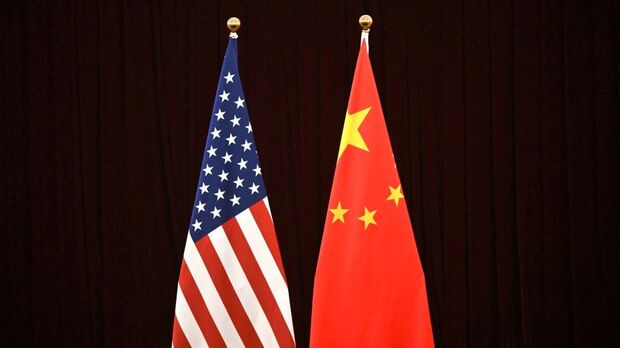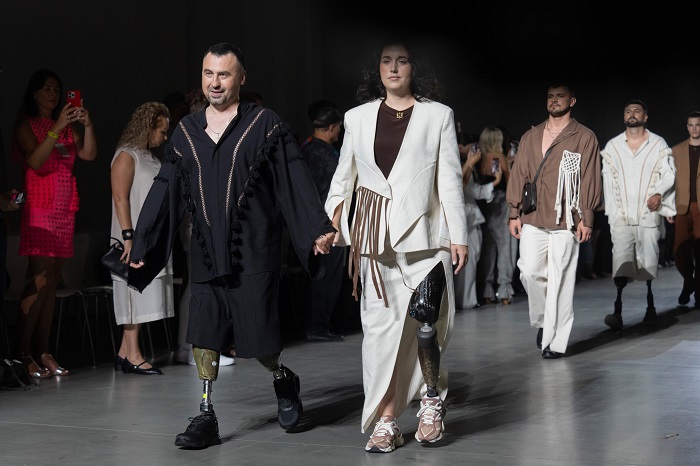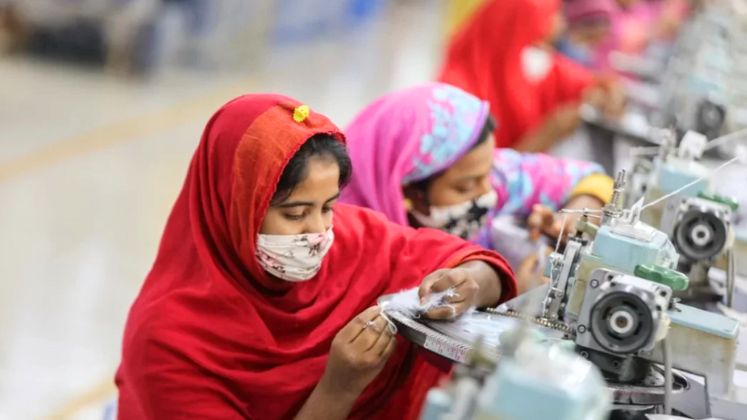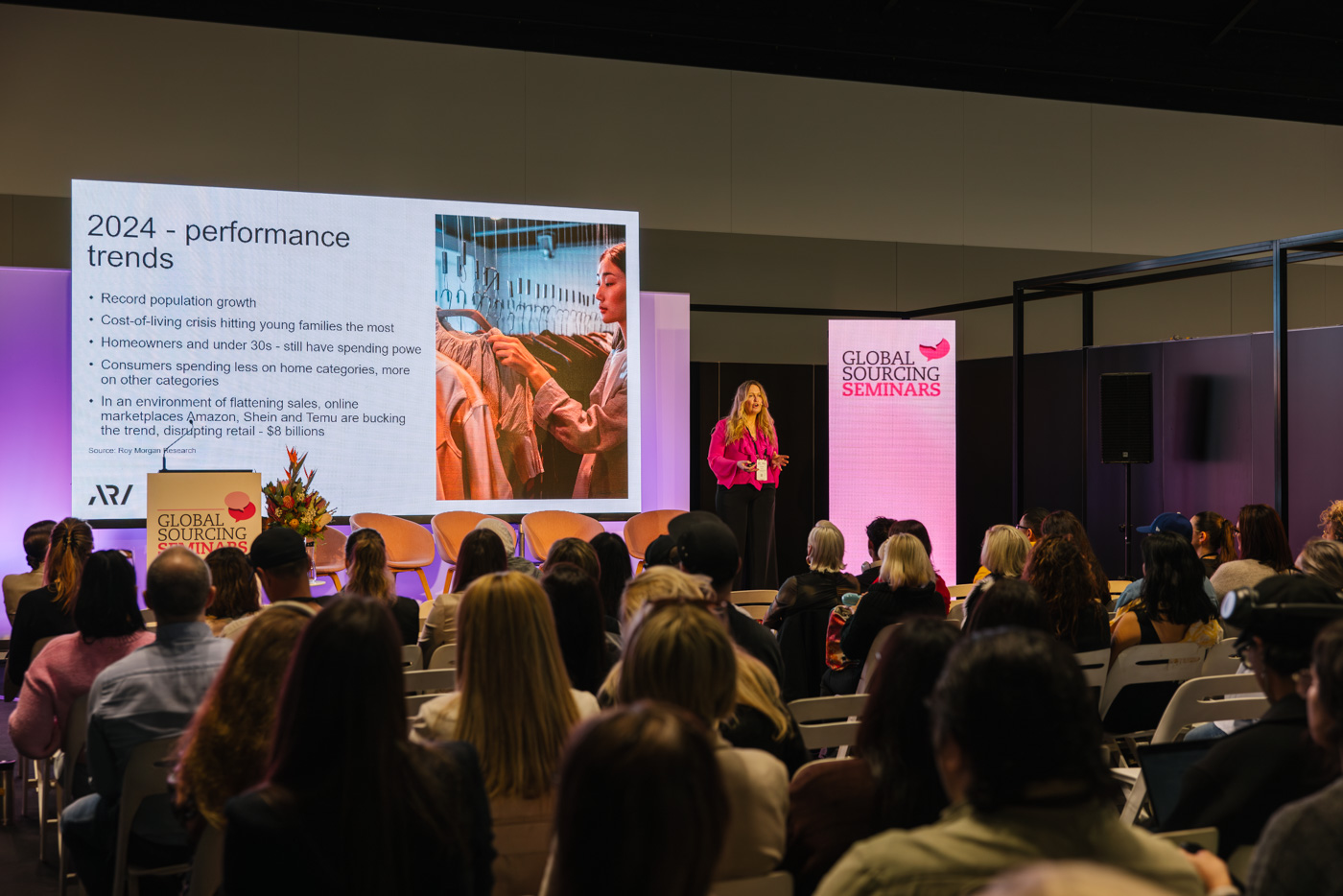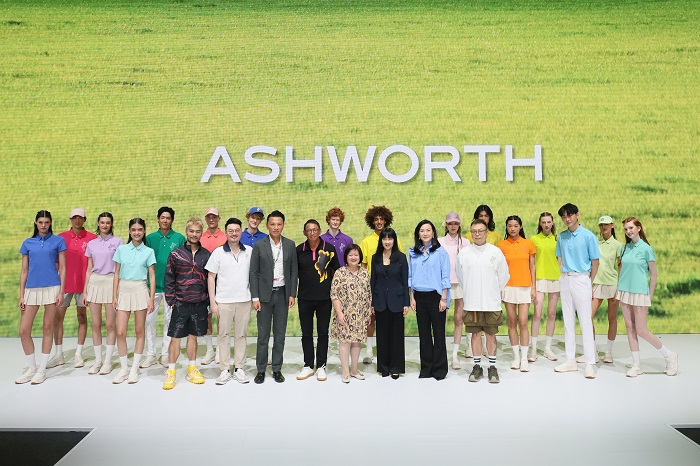FW
The Greenshowroom and the Ethical Fashion Show Berlin will now be held under one roof. The organiser, Messe Frankfurt, has decided to move the show to Postbahnhof, at Ostbahnhof in Berlin. The two trade fairs are Europe’s biggest platform for green fashion during the Berlin Fashion Week. For the first time, from January 19 to 21, 2015, they will be held concurrently.
Messe Frankfurt will continue the successful policies and characteristic features of the two events. The Ethical Fashion Show Berlin will hold the spotlight on street and casual wear, while the Greenshowroom will concentrate on high-end fashion and the relevant accessories. This newly merged combination of two trade fairs is set to present a unique spectrum of sustainable fashion.
The merger of the two trade fairs will also help exhibitors, visitors and media representatives save time during the fashion week. Postbahnhof venue is directly next to the Ostbahnhof train station that also has plenty of parking facility. Also, the 3,000 sq. mtr. of exhibition space at Postbahnhof would provide ample space to display eco-fashion and also to hold programs during the events on all the three days of the trade fair.
T-shirts have the biggest share in Bangladesh's exports of readymade garments. T-shirt orders are heading for Bangladesh bypassing key competitors like China and India.
Bangladesh has become the world’s second largest T-shirt exporter after China. T-shirt makers in Bangladesh fetch 24.5 per cent of the overall income from garment exports and account for nearly 50 per cent of knitwear shipments. To cope with the increasing demand for T-shirts, the country's knitwear industry is poised to enter a new era of business with massive expansion and significant upgrading. There are nearly 1,000 factories around Dhaka, and the port city of Chittagong and elsewhere involved in the T-shirt business.
Nearly 80 per cent of the T-shirts go to the EU market. Competitive wage rates, easily trainable local workforce and entrepreneurial skills combined with government policy support have been helping the significant growth of the T-shirt industry. Local sources are providing more than 90 per cent of the fabrics needed for production. With tremendous growth in T-shirt exports, the capacity of backward linkages, including buttons and zippers, has also gradually increased in recent times.
Many garment industries have their own dyeing and finishing units. Separate dyeing and finishing industries also have grown up over time to support the sector.
Collection Premiere Moscow took place from September, 3 to 6, 2014. The fair hosted about 1,400 exhibitors from 33 countries and registered 18,500 visitors from 38 countries, including Ukraine. However, this edition saw fewer numbers of visitors because of the prevailing tense political situation. Attendance was down by four per cent. This year, 25 new Russian exhibitors presented their collections for the first time. The exhibition focused on the rapidly growing market segment of mid-to upper class in Russia.
The collections presented include leisure wear, evening wear, lingerie, beachwear, men’s wear, children’s wear, women’s wear. This included readymade and knitted wear, textiles, yarns, accessories and auxiliary materials for tailoring. The event was supported by fashion shows and catwalk shows. At this year’s show, the Russian magazine Lingerie celebrated its 10-year anniversary.
The next Collection Première Moscow will take place from February 24 to 27, 2015. This is the largest fashion trade fair in Eastern Europe. It’s held in Moscow twice a year. Most trade visitors are shop owners, corporate executives, buyers and store managers. Many Russian buyers don’t get a chance to travel to Europe because of visa requirements, so they visit CPM.
www.cpm-moscow.com/
Russia and western countries are engaged in retaliatory trade measures due to the Ukraine crisis. After sanctions were imposed by western countries on Russia, the Russian government has taken a decision to impose a ban on the import of industrial equipment from western countries, specifically on equipment for Russia’s nonwovens and technical textiles industries.
Germany and Belgium have been the largest suppliers of equipment for the Russian nonwovens and technical textile industries. Most of the modern equipment needed for Russian industry used to be imported. The imposition of a ban may provide the drive for development of national machine building industry and will provide new orders to it.
In a way the ban will serve to support local producers though the quality of their production is often low compared with the quality of imports. But first of all they need to establish their own production. Also the Russian government plans to increase support to domestic producers, which is expected to take place through the provision of numerous benefits and incentives to them. There are plans for a special fund, which will provide cheap loans to domestic producers for expansion of their production facilities.
Meanwhile Russia will have to turn to Chinese or Korean technology, whose quality is lower than the equipment supplied by EU countries.
The September edition of Munich Fabric Start reached 950 international exhibitors showcasing a varied portfolio of about 1,500 different fabric collections. The event has been witnessing returning exhibitors and visitors, further enriched by an increasing amount of international guests visiting the Munich fair. The visitors came from the US, Canada and Scandinavia besides the European countries.
Commenting on the exhibition’s success, Sebastian Klinder, CEO, Munich Fabric Start, said the event has been witnessing fully booked halls. Even the new edition of the BlueZone saw 75 exhibitors including leading European denim weavers and finishers. According to him, working at such rhythms is impressive because the company is continuously organizing different events every month and a half.
The company recently inked a partnership with fashion fair Premium Exhibitions with the first ‘Premium Order Munich’ concluding in August in the MOC venue. Even the View Premium Selection edition held in Munich mid-July was a success. The exhibition hosted about 300 collections Held twice a year in July and December, the platform serves as a preview textile fair.
Supporting Karl-Heinz Müller’s decision of bringing Bread & Buttern Berlin back to Germany, Klinder says that returning to Berlin was the right decision since many companies want to expand their presence in a strong market like Germany. Expressing his views on lack of denim brands in Germany apart from Mustang, he wished that even German manufacturers would some-day be able to launch an interesting brand that could become important and trendsetting.
www.munichfabricstart.com
Sarasavi Exports the premier exporter of hosiery products and ties and socks from Sri Lanka has acquired Isabella from the DB Apparel Group, a market leader in branded intimate apparel and hosiery in Europe.
DB Apparel is based in France. It owns 15 world renowned brands of which DIM and Nur Die, produced in Sri Lanka, are market leaders in their segments with a strong presence in France, Germany, and the Czech Republic. Sarasavi Exports will now serve as a supplier of products to the DB Apparel Group through a product buy back agreement. <br/>
This transaction allows and positions Sarasavi to take advantage of the free trade agreement with India and the pending free trade agreement with China. The company intends to increase production capacity by investing in automation and product development to cater to new export markets. It offers customers value additions like anti-bacterial socks and perfumed socks.
Sri Lanka is positioning itself as the gateway to South Asia. Sri Lankan garment factories have begun to differentiate themselves in international markets. At least some of the growth can be attributed to ethical manufacturing standards in Sri Lankan apparel factories.
www.sarasaviexports.com/
 The Italian textile industry, comprised of woolen, cotton, linen, silk and knitted fabrics, registered a turnover of over €7.7 billion, a slight decrease of below 3.2 per cent compared to the previous year. Although there was a slowdown in 2012, the textile sector closed 2013 with less positive data than was estimated last February at Milano Unica. A decline of below 2.4 per cent was predicted, against more disappointing export figures.
The Italian textile industry, comprised of woolen, cotton, linen, silk and knitted fabrics, registered a turnover of over €7.7 billion, a slight decrease of below 3.2 per cent compared to the previous year. Although there was a slowdown in 2012, the textile sector closed 2013 with less positive data than was estimated last February at Milano Unica. A decline of below 2.4 per cent was predicted, against more disappointing export figures.
The Italian textile industry plays a leading role in the textile-fashion production chain, making up nearly 15.2 per cent of total sector turnover. The woolen sector remains the primary division, accounting for nearly 36.5 per cent of the sector turnover. As far as the overall performance of the textile industry is concerned, negative results were registered for the woolen sector of below 7.1 per cent, cotton, below 6.4 per cent and linen, below 2.3 per cent. On the other hand, positive results were reported by the knitted fabric with over 4.4 per cent and silk sector, with over 2 per cent growth.
As for the domestic market, a marked improvement has been noted over 2012, supported 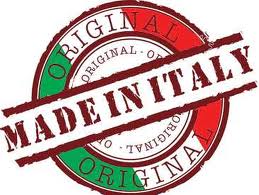 by a rise in imports. As for foreign trade in 2013, while foreign sales of Italian textiles registered an average decrease of below 2.2 per cent, imports increased over 4.2 per cent. Considering foreign trade tendencies, the final 2013 trade balance totaled €2.4 billion, a slight reduction compared to 2012 figure of less than €175 million.
by a rise in imports. As for foreign trade in 2013, while foreign sales of Italian textiles registered an average decrease of below 2.2 per cent, imports increased over 4.2 per cent. Considering foreign trade tendencies, the final 2013 trade balance totaled €2.4 billion, a slight reduction compared to 2012 figure of less than €175 million.
From a geographic viewpoint, both EU markets (which include Croatia since July 2013) and non-EU markets are losing ground but less rapidly compared to the year 2012 in terms of exports. In particular, fabric sales within the EU limit decreased by below 1.4 per cent, while sales outside the EU register were below 4.9 per cent in 2013. On the other hand, imports from EU countries increase by over 3 per cent, while imports from non-EU countries increased by over 5.8 per cent.
The data indicates that the first part of 2014 marks an improvement in performance for the Italian textile Industry when compared to 2013, presenting a positive trend for industrial production and export; along with an increase in imports, which experienced a trend reversal in 2013. Italian textiles (excluding knitted fabrics) showed positive results from January-March and April-June, registering over 9 per cent and over 6.2 per cent rise, respectively. Consequently, in the first half of the year, Italian textile production increased by over 7.6 per cent, almost over-performing when compared to the textile industry as a whole, which increased by over 4.8 per cent.
Even foreign trade has been experiencing a positive trend. In particular, during the first four months of 2014, Italian fabric export increased by over 4.2 per cent, while imports, already on the upswing in 2013, reinforced the increase to over 7.5 per cent. When various fabric divisions are analyzed a growth into double-digits can be noted for knitted fabric export with over 14.8 per cent; woolen fabric export, over 4.1 per cent for worsteds and over 3.2 per cent for carded. While the export of linen fabrics rose by over 6.6 per cent, foreign sales of cotton fabrics registered a low of below 2.7 per cent; even silk fabric export declined by below 2.2 per cent.
As for imports, knitted fabrics are first in line with a substantial increase of over 16.2 per cent; cotton fabrics are also in the positive with over 3.1 per cent, followed by linen fabrics registering over 2.9 per cent; and worsted woolens, 2.4 per cent. However, carded woolens import dropped below 1.1 per cent. On the other hand, the import of pure silk fabrics increased by over 5.8 per cent during the first four months of 2014.
Considering these results, the total turnover for Italian textiles from January-April 2014 reached €577 million, a slight improvement over the same period in 2013. According to SMI estimates, the positive tendency should continue throughout the second quarter.
A Chinese company Jiangsu Lianfa is building a textile factory in Kenya. It will be one of the largest in the African continent and is likely to create more than 30,000 jobs. It will be located on a 50,000 acre cotton farm. The investment involved in this project is about $500 million. The plant is expected to produce goods worth $1.5 billion per annum and is also anticipated to triple Kenya’s annual production of textile goods. The country recorded a 6.5 per cent growth in 2013 predominantly supported by manufacture of twine, cordage and rope as well as knitting wool.
Jiangsu plans to have a textile factory in Addis Ababa, Ethiopia. The factory will create over 20,000 jobs once it starts operation. The firm has also made similar pre-investment assessments in Uganda and Tanzania. Africa, especially North Africa, is starting to become a manufacturing hub. Some of the biggest clothing companies of the world are expanding their sourcing operations in Africa. Sub-Saharan Africa was once seen by a number of investors as a pure commodity play, but its rapid development has allowed the continent to become the next frontier market, with a number of untapped sectors.
The Italian subsidiary of Shima Seiki will hold an exhibition on September 24 to 26, 2014. Shima Seiki is a Japanese computerised knitting machine manufacturer. The exhibition will be a showcase for the company’s newest selection of computerised flat knit machines like the flagship MACH2X series with slide needles mounted on four needle beds, the new compact SWG-N2 series whole garment knitting machine with capability for industrial textiles, and the SRY123 and SRY183 with loop pressers that produce unique knitwear with woven textures.
Demonstrations will also be performed on the company’s SDS-One Apex 3 design system that is at the core of the company’s total knitting system concept. With comprehensive support of all aspects throughout the knit supply chain, Apex 3 integrates knit production into one smooth and efficient workflow from yarn development, product planning and design to machine programming, production and even sales promotion. Photo-realistic simulation capability minimizes the need for sample-making, effectively reducing time, material and cost from the sampling process.
Shima Seiki was founded in 1961. The company is principally involved in the manufacture and sale of flat knit machines, design systems, seamless gloves and sock knitting machines. Additionally, through its subsidiaries, the company is also engaged in the operation of hotels, as well as the manufacture, sale and trading of fibrous raw materials.
www.shimaseiki.com/
Ghana is looking at increasing its investment in the textile industry to enable manufacturing companies to take advantage of growing opportunities in the international market. Already the cotton industry is receiving an appreciable measure of attention. In Ghana cotton serves as the raw material base. Now the government plans to extend its focus to finished products.
In the past, Ghanaian companies could not take advantage of the Africa Growth and Opportunities Act because of severe competition from the Asian market. So the country is aiming at diversification of the economy and wants to shed its reliance on primary products. There is a policy shift towards value addition. Investment has been hiked heavily in agriculture and this has started yielding dividends as rice production, for instance, has seen a 60 per cent increase.
The textile industry, which was once the frontrunner in Ghana’s industrial sector, has been declining over the years. This is due largely to trade liberalization policies and programs, making it impossible for Ghana’s textile products to compete with cheap imports from Asia. China has gradually taken over the Ghanaian market with a primary focus on the textiles industry. Although Chinese textiles are not durable, compared to those made in Ghana, their prices are far lower.



